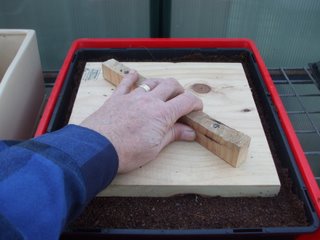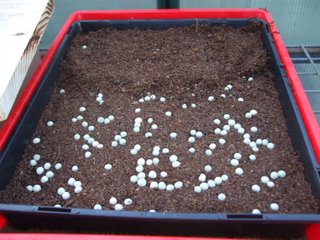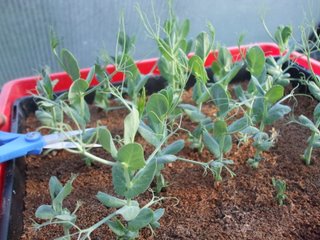Have you ever grown sprouts? If you haven’t the I recommend you read the other articles on this website about how to do that, if you have you will know where i am coming from. Sprouts are seeds that have germinated and put in a bit of growth, then we eat them. Microgreens are the next step along the plant growth continuum, in that the seeds are plated into a growing medium, germinate, produce roots and a couple of leaves – then we eat them.
Why bother?
A reasonable question! If you are a flat or apartment dweller but still want to grow fresh veggies, if you want to include home grown fresh harvested veggies in your diet, if you want to improve (I resisted using the word “supercharge” here, otherwise I may give the impression I watch too much crappy TV) your diet by including the vitamins and minerals that fresh veggies provide; microgreens may be for you.
They don’t need lots of space, fertiliser or water and are easy to grow; if you put together your microgreen set up the way we describe in this article they will need even less care and you won’t have to worry about going away for a couple of days to a week and leaving your microgreens without water, you will still be producing fresh vegetables.
Mircrogreens can save you money as well as reduce your environmental impact by reducing those food miles (or kilometres) down to just feet, and if you can’t get to the shops for any reason, you will still have a supply of fresh greens for the table. Let’s face it; you would have to be utterly crazy NOT to get stuck into microgreens. OK, OK so I do get a bit carried away........read the article though and then give it a go, you won’t be sorry.
A Word of Caution
You just knew that there was a fly in the ointment somewhere didn’t you? At least this one is a small one. In the same way as you would when getting seeds for sprouting, make sure that they are designed for sprouting and/or microgreen production or consumption directly by people in some form. This is to make sure that they have not been contaminated with fungicides or other pesticide to reduce losses when sown in the ground, because these chemicals could make you sick. Also with some vegetables such as tomatoes, the plant is actually toxic and so not suitable for rowing as a microgreen (although the fruit is fine obviously) but if you stick with the plants in this article you will be fine.
Where do you get the seeds?
One obvious place to get your seeds are from a seed supplier that supplies sprouting seeds, preferably one that specialises in open pollinated, organic and/or heritage seeds because these are people worth dealing with. As mentioned in other articles, I tend to buy most of my seeds from Eden Seeds in Queensland, their website is in the links area.
That is not the only avenue though, you can pick up packets of seeds that are destined for human consumption directly but that will still sprout; for example the old “blue boiler” dried peas that are used to make mushy peas with. The can be bought from the likes of Woolies and Coles in the soup section, quite cheaply and have a very good germination rates. Think about sunflower seeds in the same way, even if they do come from the bird seed section.
If you have Asian food shops near you, there are a number of seeds that are used to make curries and other dishes that can be bought quite cheaply and will germinate to give you wonderful microgreens. Examples of these seeds include onion, mustard, fenugreek and mung beans, available in comparatively large amounts for a few dollars, good value in anyone’s language.
If all else fails, or you want to be that much more sustainable/self sufficient, you can save your own seed and grow microgreens from that. There are circumstances where you might have produced seed that you don’t want to use, say if you have a number of different varieties of brassicas flowering at the same time. Brassicas are notoriously promiscuous and the seed you save from an individual plant may not breed true to the parent you harvested it from. With microgreens you are only going to grow it up to a few leaves before consuming it, it won’t matter if was a cabbage or broccoli or a cabboli ( a cross between cabbage and broccoli....), at that stage it will look (and taste) the same.
What plants are suitable for growing as microgreens?
The following plants can be grown as microgreens for human consumption –
Herbs such as – rocket, basil, coriander, mustard
Vegetables such as – Asian greens (mizuna, mibuna, tatsoi, pack choi) Beets, brassicas (broccoli, cabbage, kale), celery, garden cress, endive, lettuce, peas, radish.
Grains such as – barley, oats, wheat, linseed, buckwheat, sunflower
How do you do it?
Get hold of –
• A seedling flat - Seedling flats are available from nurseries and if you have bought lots of seedlings in the past you may have a couple floating around the house or garden, I sure did. Otherwise you can buy them new or make your own out of wood, the commercial ones are usually 350mm long (outside measurement) by 290mm wide (outside measurement) by 60mm deep and this is a handy size for lots of reasons.
• A kitty litter tray - these are available very cheaply at junk shops and are usually around the following dimensions – 290mm wide (inside measurement) by 400mm long (inside measurement) by 75mm high, so they will fit your seedling flat inside them.
• A piece of timber the same size as the flat, with a handle to act as a press.
• Some coarse river sand.
• Some growing medium – I use the same mix that I make for seed raising mixture basted on 3 parts cocopeat, two parts of worm castings and one part of coarse river sand.
• Scissors for harvesting.
• The seeds you want to grow into microgreens.
The process –
1. Take your kitty litter tray, and put one to two centimetres of the coarse river sand into the bottom of it and smooth it over so that it is reasonably form and level, then put water in so that it sits a few millimetres above the surface of the sand.
2. Take the seedling flat and fill it with your growing medium and tamp it down to a firm, flat surface in which to sow your seeds.
3. Sow your seeds thickly but evenly over the top of the seedling flat, this will be easy with the big seeds but a bit more difficult with the smaller seeds. There will inevitably be some unevenness in your sowing and some of this can be evened out by spreading areas too thickly sown out with a finger or adding a bit more seed in areas too thinly sown.
4. Using your press or tamper, tamp down the surface of your flat to ensure good soil to seed contact and cover the seed with either a thin layer of growing medium or newspaper to reduce evaporation.
5. Now place the sown flat into the pre-prepared kitty litter tray. The water in the kitty litter tray will wick up into the growing medium in the flat to keep the seeds moist without water logging them, the coarse sand will support he flat and act as a water reservoir so that there is less chance of your microgreens drying out. Also, by watering directly into the litter tray rather than the flat you won’t be washing smaller seeds out when you water. 
6. If you do elect to use the newspaper, lift it up every day and check on the germination of your seeds, remove it totally once they have germinated.
7. Once the seeds have germinated and grown to the point where there first two true leaves as opposed to their cotyledons or seed leaves they can be harvested. This is done by cutting them off at just above soil level with a pair of scissors, then once they are harvested wash them and remove any soil, seed coats or rotten leaves before placing them into a container ready to go into the fridge.
The freshly harvested microgreens can be used in salads, sandwiches, on top of soup as a garnish or almost anywhere you would use salad leaves, but they will give you a much greater variety of flavours and textures. You could even develop your own microgreen mixes by combining different brassicas, different Asian greens or a mix of vegetables and herbs; whatever takes you fancy to make your own personal microgreen mix.
Good luck and bon appetite!



